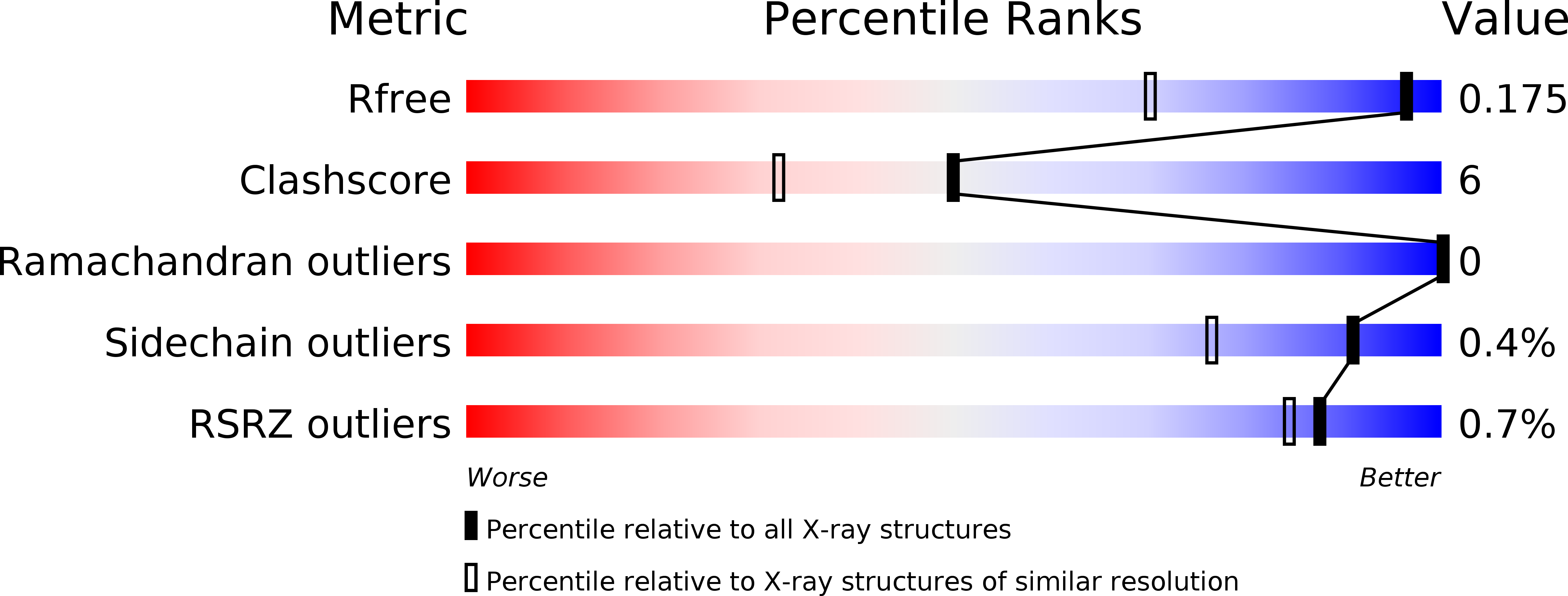
Deposition Date
2019-02-14
Release Date
2019-09-25
Last Version Date
2024-01-24
Entry Detail
PDB ID:
6QPS
Keywords:
Title:
Structural characterization of a mannuronic acid specific polysaccharide family 6 lyase enzyme from human gut microbiota
Biological Source:
Source Organism:
Bacteroides cellulosilyticus (Taxon ID: 246787)
Host Organism:
Method Details:
Experimental Method:
Resolution:
1.29 Å
R-Value Free:
0.17
R-Value Work:
0.15
R-Value Observed:
0.15
Space Group:
P 1 21 1


